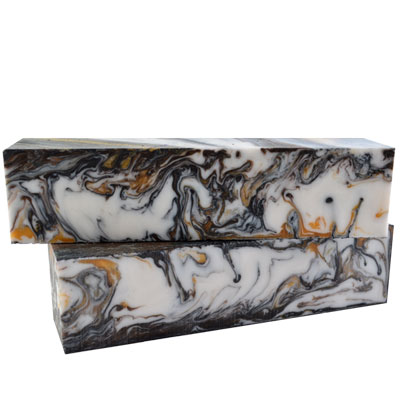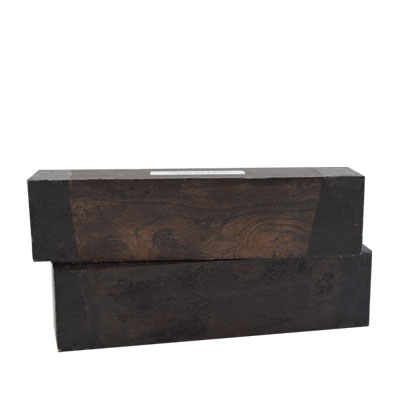Results 21 to 25 of 25
Thread: Beginning Scale Maker Questions
-
05-24-2018, 02:23 AM #21

From having worked in the Auto Body Trade on all kinds of rigs that had fiberglass I'll tell you a little tip.
Cold/Cool Water Showers & Cold/Cool Water Washing of Hands & Arms are your friends. Hot/Warm water just opens the pores up more and the glass digs deeper and takes longer to get rid of.
I hated working with that crap------------Our house is as Neil left it- an Aladdins cave of 'stuff'.
Kim X
-
-
05-24-2018, 06:17 PM #22

Well, I think I may have gone off the deep end. Need to do scales for a couple of razors so I ordered some material. Since I didn't want to make them all the same, by the time I finisher ordering I should have enough material for the rest of my life.


Two examples from one supplier. And that ain't all!!!
Like I said, it will take take the rest of my life to use it all.
-
05-24-2018, 08:47 PM #23Senior Member




- Join Date
- Feb 2013
- Location
- Haida Gwaii, British Columbia, Canada
- Posts
- 14,457
Thanked: 4830
If you only have enough material to last the rest of this life, you are just getting started. I have a lot of scale material.
Last edited by RezDog; 05-24-2018 at 09:15 PM.
It's not what you know, it's who you take fishing!
-
05-25-2018, 02:53 PM #24

JMO
For working with bone or horn, I do the cutting out at a friend's wood shop. When I get home, I "WET" file, scrape and sand the shape and contours at the kitchen sink The material dust and shaving go down the drain and cleanup is a cinch. Then I use alcohol to remove water from the steel tools.
I hone at the sink also
I made a removable work surface for the sink. Newer sinks may have "Corian" surfaces to fit them as an option. Some home stores also carry them in some common sizes
YMMV
~RichardBe yourself; everyone else is already taken.
- Oscar Wilde
-
The Following User Says Thank You to Geezer For This Useful Post:
Diboll (05-25-2018)
-
06-01-2018, 06:20 PM #25

Tons of great advice in this thread!
I've also settled into ripping to and using 1/8" stock to start for all scales. After they're rough cut I use some light double sided tape to join the inside of both halves - or - light spray adhesive on a length of tissue between the halves and allowed to dry for a bit. That allows for exact matches on all angles. Also allow me to "round" the scales if desired in a way that tends to keep them equal width while creating complex angles and curves.
Sanding will indeed remove more material than you may intend so be careful as you get close to the width and shapes you desire. Change to higher grits and/or slower speeds as you approach the desired width or shape.
Bevels on scales can be a bear to get matched on both sides though. This is where I change the belt grit to something higher and go very slowly. Avoid the sanding disk when doing bevels and use the belt - at least that's where I sometimes go wrong. It's easy to tilt the plate on my disk sander to keep the angles the same, but once I get into the top part of the scales (the inside of the curve) it's not possible to catch it all and things can start to get uneven.
I'm working on a set of scales now that are quite different and presented a few puzzles to solve due to it's geometry, but so far so good since I've been careful to match all angles and work slowly using 400 or higher grit after initial rough shaping.
The wedge can be a real puzzle at times but Glenn's quote above is great advice - tough to remember to measure the angles but it saves a lot of time and headache later on. You really don't want to have to peen and remove pins multiple times - this is where micro fasteners come in very handy! I also keep a set of 4 fake tangs of the widths Glenn mentioned handy to use in mockups. I just removed two from trashed blades and the other two I made from excess wood strips. Amazing how handy they are to use.
I always rip 2 sets of scale blanks for every set I'm going to use. Easy to do when you have a few lifetimes worth of raw stock. Sometimes I sand or cut the first set too much or at the wrong angle and have to go to the backup set. Mostly I'll get ideas about changes to the design while shaping and just run with it. If the idea doesn't pan out, I still have the backup set roughed out and ready to get back on track.
Finally, synthetic materials are sneaky bad stuff. I normally use a respirator but sometimes it's just too tempting to touch the scales to a belt sander for just a second or two without it all. In those cases I make sure I'm at least wearing a paper mask - try to avoid cutting or sanding man-made stuff without wearing a mask at least. Have to admit I'll just hold my breath for a few seconds if all I'm doing is touching G10 to a belt sander for a second - but that's rare and I know it's bad for me.


 49Likes
49Likes LinkBack URL
LinkBack URL About LinkBacks
About LinkBacks








 Reply With Quote
Reply With Quote